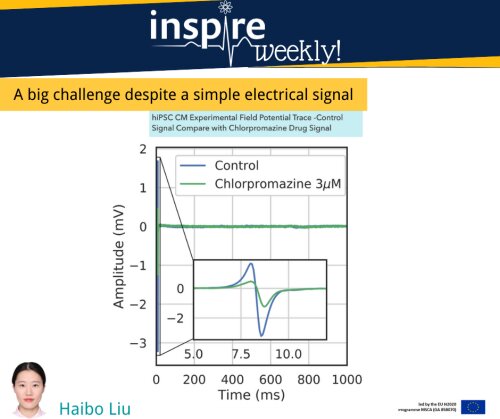17/03/2021 - Haibo (ESR #3)

The picture shows an electrical signal recorded from human heart muscle cells (cardiomyocytes). Interestingly, these cardiomyocytes have been derived from human inducible Pluripotent Stem Cells (hiPSC), a specific type of human stem cell obtained after reprogramming of human skin cells (this topic will later be explained by ESR1 in another INSPIRE Weekly contribution). hiPSC-based assays are used in drug development studies, particularly for cardiovascular safety evaluation. Drug toxicity to the heart could induce specific changes in the amplitude or shape of the signal, thereby reflecting underlying mechanisms. However, manually analysing these signal data is challenging given the very large amount of data generated by these experiments.
My PhD research will focus on automatically analysing the large datasets from hiPSC-cardiomyocytes assays and developing computer-based prediction models (using artificial intelligence and machine learning) to detect and classify drug effects.
Reference:
- Raphel F, De Korte T, Lombardi D, Braam S, Gerbeau JF (2020). A greedy classifier optimization strategy to assess ion channel blocking activity and pro-arrhythmia in hiPSC-cardiomyocytes. PLOS Computational Biology 16(9): e1008203. https://doi.org/10.1371/journal.pcbi.1008203